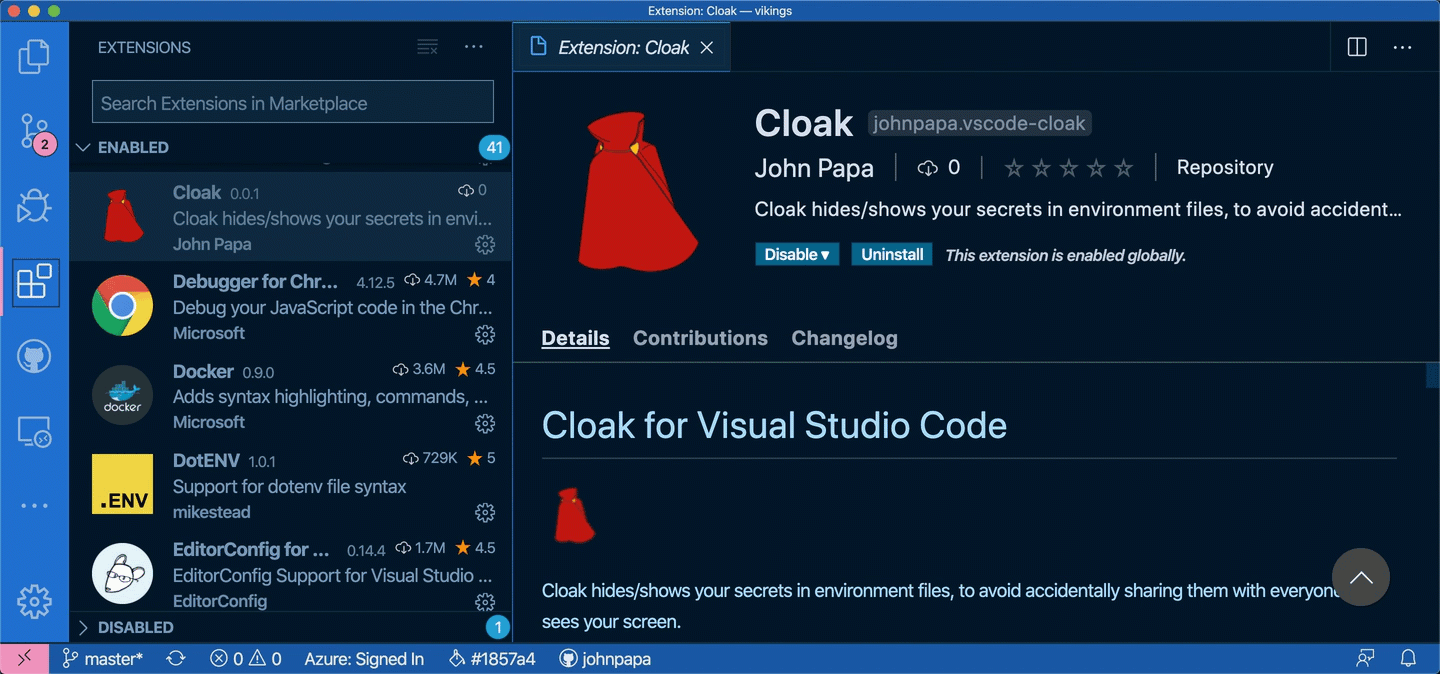Have you ever wanted to hide your secrets in environment files? Cloak for VS Code helps you avoid accidentally sharing them with everyone who sees your screen.

Alpha Release
I just released Cloak v0.0.2 over the weekend!
What Can it Do?
Great question! You can check out the full documentation here. But here is a quick glimpse of the main features.
- Hide secrets in environment files
- Show the secrets again
- Toggle them on and off (with a keybinding or a command)
- Optionally hide environment file comments (defaults to showing them)
Get Cloak
If you are interested in trying out Cloak, you can find it here in the marketplace.
or from VS Code 👇
- Open Extensions sideBar panel in Visual Studio Code and choose the menu options for View → Extensions
- Search for
Cloak - Click Install
- Click Reload, if required
Quick Usage
Let's see Cloak in action!
- Open a
.envfile - Press
F1to open the command palette - Type
Cloak - Choose
Cloak: Hide Secrets
Now enjoy exploring the rest of the features explained in the docs!

Contribute
Contribute to GitHub repository here
What Else
One of the key aspects I want before releasing v1 is to have a lot of unit tests in place, and to have it hooked into CI. I decided to use Azure DevOps with their YAML option. Once it is up and running, I'll write more about how this works on Azure DevOps in future posts.
Resources
- Get VS Code
- Create your first VS Code extension
- VS Code Extension API
- Learn how to add WebPack bundles to your favorite extensions
- Try Azure Free
Credits
Inspiration comes in many forms. These folks and teams have contributed either through ideas, issues, pull requests, or guidance. Thank you!
-
Thanks to John Lindquist and Wes Bos for the inspiration.
-
The VS Code team and their incredibly helpful guide for creating extensions
-
Here are some great examples for extensions from the VS Code team
Thanks!






